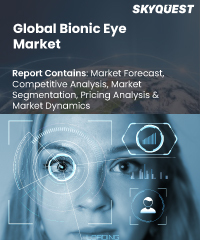
Report ID: SQMIG35H2113

Report ID:
SQMIG35H2113 |
Region:
Global |
Published Date: February, 2024
Pages:
157
|
Tables:
59 |
Figures:
75
Bionic Eye Market size was valued at USD 267.1 Million in 2022 and is poised to grow from USD 301.50 Million in 2023 to USD 794.74 Million by 2031, at a CAGR of 12.88% during the forecast period (2024-2031).
The global bionic eye market is experiencing significant growth and advancements in the field of vision restoration technology. The market is being driven by factors such as the increasing prevalence of retinal diseases, a rising geriatric population, and advancements in bionic eye technology. The growing number of individuals suffering from retinal disorders creates a substantial demand for innovative solutions that can restore or enhance their vision. Additionally, the aging population is prone to vision-related conditions, further contributing to the market growth. Technological advancements have led to the development of more sophisticated and effective bionic eye systems. These systems typically consist of an implantable device that stimulates the remaining functional cells of the retina, coupled with an external camera and image processing unit. Continuous research and development efforts are focused on improving the resolution, visual acuity, and overall performance of bionic eyes, offering patients a better quality of vision. However, the global bionic eye market also faces several challenges. One of the primary challenges is the high cost associated with bionic eye implants and the related surgical procedures. The cost can limit the accessibility of these devices to a wider population, particularly in developing countries or regions with inadequate healthcare infrastructure. Additionally, the long-term efficacy and safety of bionic eyes are still being evaluated, and further research is required to optimise the implantation techniques and enhance patient outcomes. Regulatory approvals and reimbursement policies also pose challenges to the market. The complex nature of bionic eye technology requires rigorous testing and evaluation to ensure safety and efficacy. Obtaining regulatory approvals can be a time-consuming and costly process. Furthermore, reimbursement coverage for bionic eye implants varies across different regions and healthcare systems, impacting patient affordability and market adoption.
Our industry expert will work with you to provide you with customized data in a short amount of time.
REQUEST FREE CUSTOMIZATIONWant to customize this report? This report can be personalized according to your needs. Our analysts and industry experts will work directly with you to understand your requirements and provide you with customized data in a short amount of time. We offer $1000 worth of FREE customization at the time of purchase.

Report ID: SQMIG35H2113